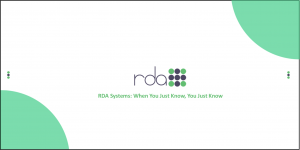Purchasing a new software system can be a perfect step in the right direction for any organization. However, it can also be a daunting and frustrating challenge. In order to successfully transition to the new software, organizations must have an implementation plan in place. This plan actually begins during the software selection stage and can maximize the value of this new technology, thereby providing the opportunity to take advantage of all the efficiency improvements of the software. Failure to instill an implementation plan can cost time and money, as well as not getting the full benefits of the new software.
The five steps to a successful integration plan are as follows:
-
Plan ahead by creating a detailed needs document.
A “needs” document is a collection of information to share with all vested parties and ensures the new system covers all the needs of the company. Begin by engaging designated staff to create a must-have list of features required by the new system that meets the company’s needs. Keep a list of all employees who will regularly use the new system, including daily users and managers who will utilize the data produced. Define all stakeholders and explain how they will be impacted by the new system. This roadmap will ensure the new software works in tandem with the company’s requirements.
-
Create Process and Solution Designs to maximize adoption.
While the needs document defines the features necessary in your new software, this document will also help in avoiding scope creep. Scope creep is defined as the danger of adding features and elements to the software until the project becomes unmanageable. This occurs when leaders decide to setup and customize all the features and objectives at once. To avoid scope creep, it becomes necessary to stay on task by creating a process design which will allow you to remain focused on your needs. Then a solution design should be in place upon installation of the new system so the key features of the new software are in place for all users. The ultimate aim of a solution design is for leaders to identify and prioritize which features are the most important for the needs of the company, then master those features first. These project management tools allow employees to become accustomed to the new software, which in turn improves the implementation plan. Collaborative tools are essential for team members to work together and maximize employees adopting and using the software for each respective team.
-
Integrate by assigning teams to drive software implementation plans.
Integration of the new software is critical as it involves exporting data from one system to another. To guarantee successful implementation of the new software, leaders must assemble implementation teams. These teams will be determined by estimating how many employees and vendors will be using the system then concentrate first on selecting two teams: an acting administrator and a training leader for the new system. Larger establishments may need to extend teams to include an IT leader to configure and integrate with other systems. Each team leader should be responsible for championing their assigned unit and be the point person for answering questions.
-
Encourage user adoption with a proactive and engaging strategy.
Without a clear message to employees about the goals of the new software, a backlash from employees may occur, creating pain points that inhibit employees from adopting and correctly using the new software. Employers should encourage user adoption by clearly defining goals that the newly implemented software is to achieve. Being specific about these goals provides a tangible reason for installing the new software. Leaders then can use strategies to encourage employees to adopt and accept the new system. One strategy is positive engagement with the product called the ADKAR model. ADKAR means:
AWARENESS
DESIRE
KNOWLEDGE
ABILITY
REINFORCEMENT
This model not only encourages users to adopt the new software, but it can also foster other changes in the company culture. Team leaders can use this model to guide employees to a successful change by tapping into talents and positive emotions that provide new ways of thinking and transitioning into change.
-
Focus on continuous improvement with training.
Training is a key factor in the continuous usage and improvement with the software. The good news is that training comes in different forms, from educating team leaders on the new software to teaching the employees and vendors how the new system works. Leaders must build each training session to the needs of the stakeholders, taking into account that every employee or vendor cannot dedicate the same amount of time and energy for training purposes. Suggestions for training include: Lunch and Learns, Open House, Peer-to-peer, and Self-Training. While leaders should monitor how employees actually adopt and use the new software, they should also monitor training sessions and gage which session type works best with employees. Learning is a continuous process, so training should be on-going as per employee and company needs.
These five steps can be critical to implementing new software to an organization in order to obtain the most value from the software. Company leaders should continually be aware that an implementation plan is a shared process that includes IT leaders, implementation teams, system champions, chosen vendors, and daily users. It is imperative that these leaders engage, communicate, and encourage others throughout the implementation process.





